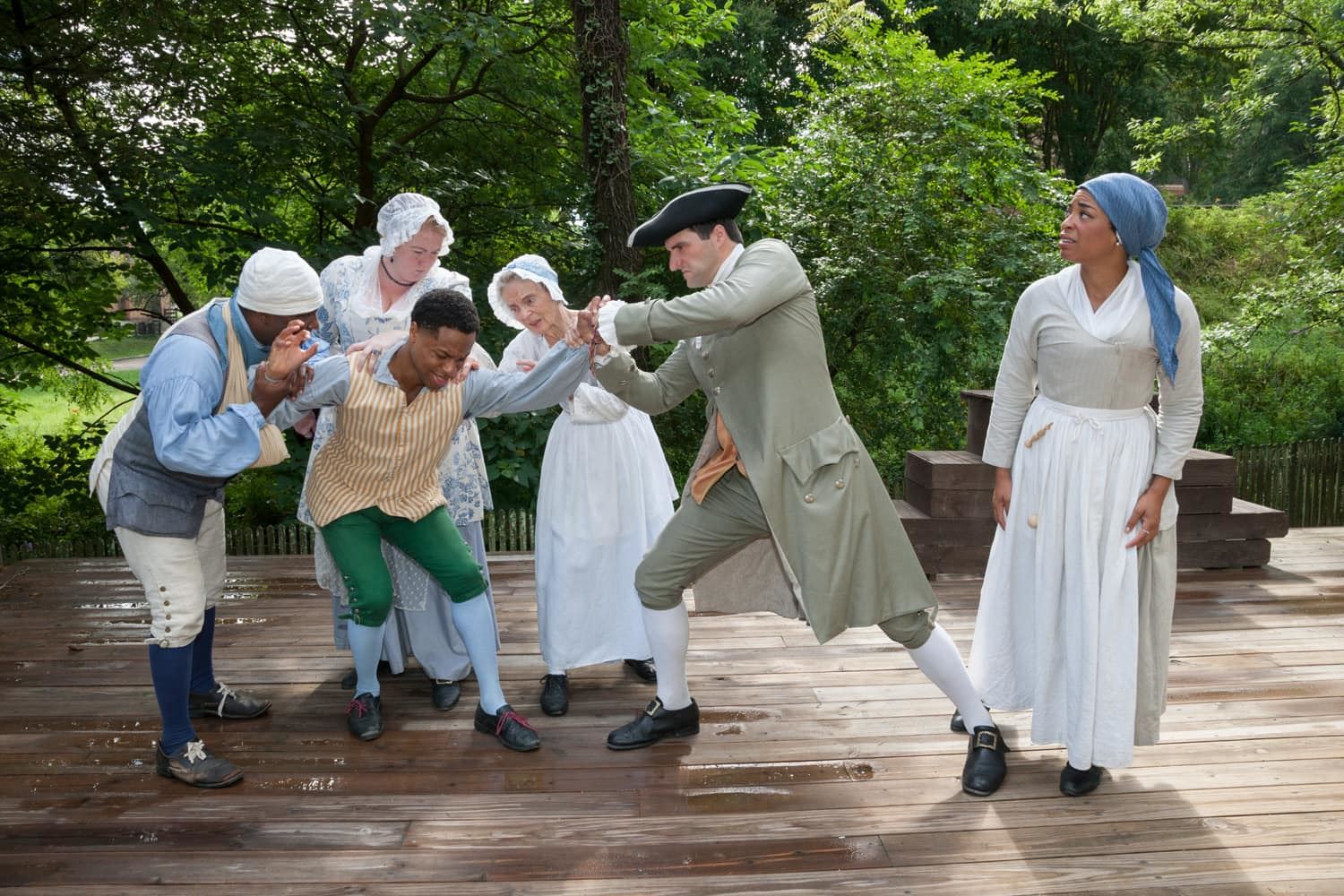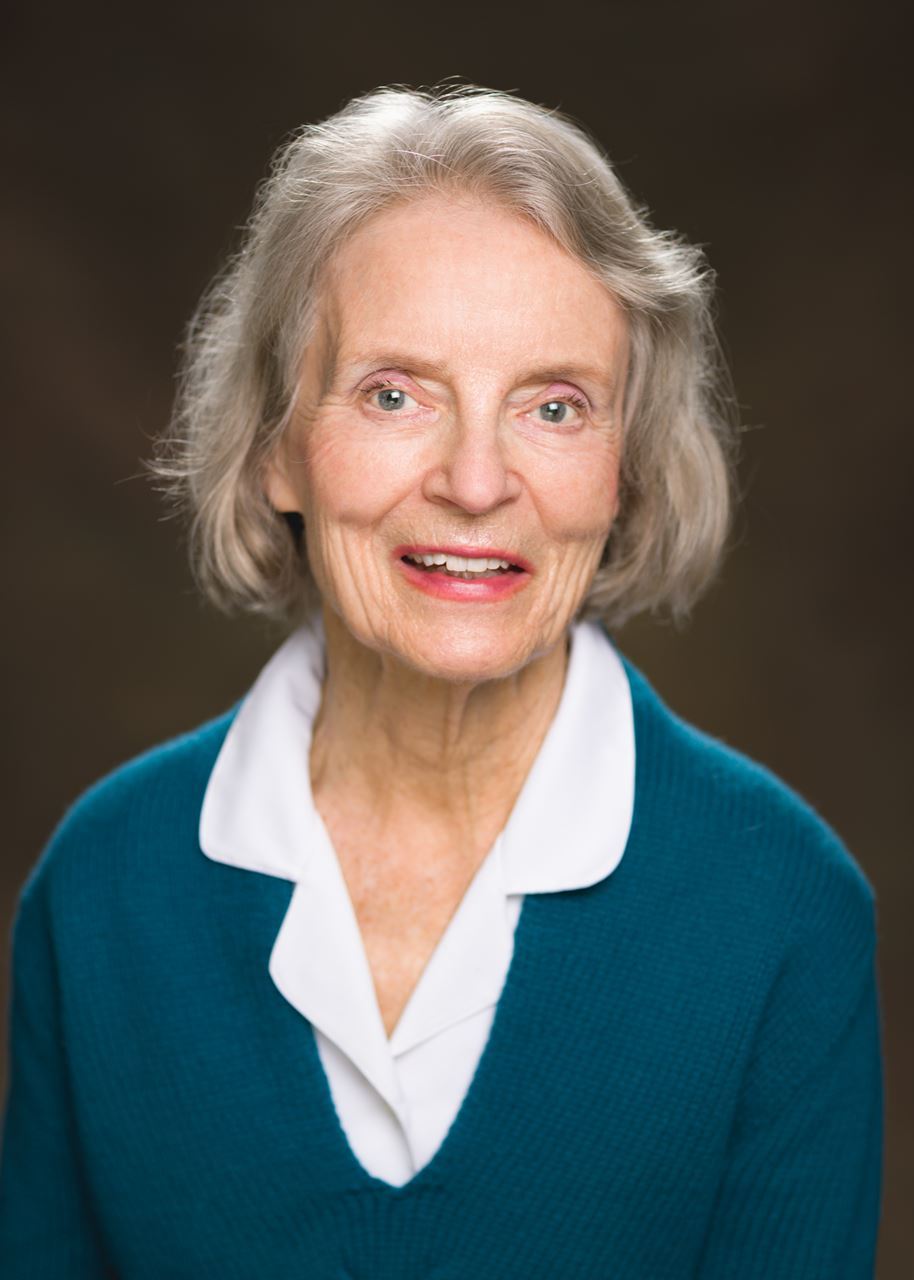 Road to Redemption:
Road to Redemption:
Reflections on the creation and impact of “Journey to Redemption”
By Antoinette Brennan and Jamar Jones
At Colonial Williamsburg, our daily charge is to bring 18th century Virginia to life. We explore the intricacies of our nation’s history to see how the past continues to inform our present. As Actor Interpreters, we portray numerous historical figures on stage and in historic sites with the hope of spotlighting the lives of individuals often overlooked or unnoticed in our study of history. History is extremely complex. Over half of Williamsburg’s population during the 18th century were people of African descent, and the majority of those people were enslaved.
“What is it like interpreting slavery?”
Difficult. Sensitive. Unpleasant. Complex. Necessary.
In 2016, members of our ensemble had the pleasure of traveling to Denver, Colorado to present our original piece Journey to Redemption at the IMTAL conference. Journey to Redemption is a 35 minute theatrical piece and departure from the usual style of dramatic presentations at Colonial Williamsburg. It serves as a refreshing vehicle to examine 18th century slavery as well as its affects on our present day. The production is a devised theatre piece; a collaboration between the six ensemble members (Antoinette Brennan, David Catanese, Corinne E. Dame, Jamar Jones, Katrinah Carol Lewis, and Jeremy V. Morris) and two creative facilitators (Mary Carter and Lucinda McDermott).
“Now, on this journey you may encounter a few bumps in the road,
perhaps a detour or two, but you won’t be alone.”
–Antoinette Brennan as Ann Wager in Journey
When we began crafting Journey to Redemption all we had was a title. Lucinda McDermott, then Manager of Dramatic Arts, wanted to explore the challenges and successes that Actor Interpreters face portraying and interpreting the lives of enslaved people and slave owners. It was imperative to spotlight and explore people of Williamsburg, both enslaved and free during the American Revolution, and how their stories could be presented in a fresh and new way. Our ensemble is a part of a larger collective called the Actor Interpreter unit, and the six of us were chosen to develop this new theatrical presentation because of our creative interest and past experiences. There was a desire to have many perspectives represented in this piece, and our ensemble reflects diversity in race, sex, and age.
Our first task as a group was getting to know one another. This required cooperation and respect in order to solidify our ensemble. It was essential that we trust each other, not only to feel safe to share our inner feelings, but to also feel free to explore our creativity without being fearful of criticism or judgement. One ground rule was that all ideas needed to be considered before they could be rejected. One does not laugh at a baby learning to walk, so we were to give each suggestion its due consideration.
In order to help establish guidelines for creative collaboration we participated in exercises all designed to get the creative juices flowing. We utilized a myriad of brainstorming and creative exercises once we began the process. Sometimes a member of the ensemble would share a story about past interpretive successes or challenges. Sometimes we revealed painful truths through our personal poetry or told a funny story. At times, we used no words. We moved individually and as a unit. Movement is something crucial and essential to the power of Journey to Redemption. Guests have often commented that the entire piece appears as a well-orchestrated dance, and it is to some degree. We are a moving unit, and have interwoven several different stories and character narratives to tell one overarching story. The first half of the play is all in-character. As an ensemble we weave together our 18th century character narratives for roughly 15 minutes, and then a shift happens. Our ensemble breaks character in order to be in the ‘now’ with the audience, and throughout the second half we share our personal experiences and thoughts about working as actors and interpreters of slavery and history.
Central to our creative process was establishing our Major Dramatic Question (MDQ). The MDQ that fuels our piece is “Who is responsible for this mess?” The “mess” is the current state of race relations, the ramifications of slavery still embedded within our nation, and the healing from historical trauma still needed in our country. Our answer is that we are all responsible. With this in mind our script began to evolve and it was, indeed, a creative process, a true communal effort. Woven throughout the performance is our dealing with and answering the MDQ. The audience must be made aware not only of the question, but also the answer.
“Why do you work there? Why?”
–Jeremy V. Morris in Journey
This is a question not only presented in Journey to Redemption, but asked to us frequently by guests, friends, and family. Developing this show furthered our exploration into why each one of us continues to take on these challenging personas. Some days are harder than others, but it truly is a calling. Presenting the piece is rewarding as we share emotions of hurt and joy through anecdotes of our own experiences and those of the historical figures we portray. Additionally, our hope is to give voice to the voiceless, so that they can be remembered. It is an honor to represent these people, and we are committed to sharing their stories and experiences as fully as possible.
By speaking their names, they are remembered
The historical figures represented in Journey to Redemption:
Ann Wager, a school mistress for Negro children
Jack Booker, an enslaved printer
Roger, an enslaved footman
Mingo, an enslaved carpenter
Elizabeth Wythe, mistress of a gentry household
Lydia, an enslaved housekeeper
Jenny, an enslaved field worker
Joseph Prentis, lawyer and politician
We strive to honor them in the telling of their stories.
“When we open our minds and our hearts to the
pain of our past some healing can happen.”
–Katrinah Carol Lewis in Journey
Audience members are often very emotional after viewing the play and it is obvious that they are deeply moved. Many people give us a simple but sincere “thank you.” We never could have anticipated the impact of the piece. As artists and interpreters of history, our desire is that people find meaning and hope from the work that we create and that we represent our historical figures and colleagues in the best manner possible. We are grateful for the response to our work. It has provoked people to think and challenge what is happening right now in our country. The emotions range from tears to laughter after every performance. A question often asked afterward is, “What can I do?” We do not profess to have the answers. Hopefully Journey to Redemption encourages our audiences to initiate work in their own communities to help heal and repair the damage the legacy of slavery has on race relations in this country. It is long overdue to have these difficult conversations. Perhaps Journey to Redemption can serve as a vehicle for those who struggle to find the appropriate words to begin.
Journey to Redemption is a piece that is uniquely us and yet we are a reflection of our whole country. As we share our stories perhaps others will be inspired to share theirs. Somehow we need to open the conversation which can lead to better understanding of each other and to make our country a place where people work together without hatred and division. This is–our hope for the future. 
This article can be found in Fall 2017 - "How Do We Tell Difficult Stories in Our Institutions?" (Volume 27, Issue 4) of IMTAL Insights.

ABOUT THE AUTHORS:
 Antoinette Brennan (Ann Wager) is an actor-interpreter with the Colonial Williamsburg Foundation. She began her interpretative career in as a volunteer for the National Park Service at Yorktown, Virginia, and her next step was a role in an 18th-century theater production with Colonial Williamsburg. Her work portraying Ann Wager, the mistress of the city’s charitable Bray School for African-American children, facilitates discussions on education, religion, enslavement and the role of women, eliciting a range of opinions and views from guests and audiences of various backgrounds. Brennan finds it a privilege to touch people’s lives and raise their awareness about the injustices and repercussions of enslavement. She has also performed with the local Wedgewood Renaissance Theatre Co. with major roles in “A Delicate Balance,” “Long Day’s Journey into Night,” “Three Tall Women” and “Retreat from Moscow.” A favorite role was that of Mrs. Malaprop in Colonial Williamsburg’s production of “The Rivals.”
Antoinette Brennan (Ann Wager) is an actor-interpreter with the Colonial Williamsburg Foundation. She began her interpretative career in as a volunteer for the National Park Service at Yorktown, Virginia, and her next step was a role in an 18th-century theater production with Colonial Williamsburg. Her work portraying Ann Wager, the mistress of the city’s charitable Bray School for African-American children, facilitates discussions on education, religion, enslavement and the role of women, eliciting a range of opinions and views from guests and audiences of various backgrounds. Brennan finds it a privilege to touch people’s lives and raise their awareness about the injustices and repercussions of enslavement. She has also performed with the local Wedgewood Renaissance Theatre Co. with major roles in “A Delicate Balance,” “Long Day’s Journey into Night,” “Three Tall Women” and “Retreat from Moscow.” A favorite role was that of Mrs. Malaprop in Colonial Williamsburg’s production of “The Rivals.”
 Jamar Jones (Mingo, Roger) is an actor-interpreter with the Colonial Williamsburg Foundation. A native of Richmond, he began work with Colonial Williamsburg in the summer of 2013 as an intern for African-American research and interpretation. In April 2014, he joined the actor-interpreter unit and has had the pleasure of participating in several compelling new works as a performer and a playwright detailing the lives of free and enslaved people of the 18th century, in addition to serving as a historical interpreter. Jones views his work as both a great challenge and an extraordinary honor. It is not easy telling stories of enslavement - nor was it easy for those who endured it - but they did, and Jones believes their voices must be heard. He holds a Bachelor of Arts degree in theater and sociology from the College of William & Mary and has been working as a professional actor since graduating in 2013. His credits include: “Slave Spy” (Yorktown Victory Center), “I Have a Dream” (Theatre IV National Tour), and an original one-man production entitled “To Arrive and Conquer: My Rites of Passage,” as well as Season 2 of “Mercy Street” (PBS) and “Loving” (Focus Features).
Jamar Jones (Mingo, Roger) is an actor-interpreter with the Colonial Williamsburg Foundation. A native of Richmond, he began work with Colonial Williamsburg in the summer of 2013 as an intern for African-American research and interpretation. In April 2014, he joined the actor-interpreter unit and has had the pleasure of participating in several compelling new works as a performer and a playwright detailing the lives of free and enslaved people of the 18th century, in addition to serving as a historical interpreter. Jones views his work as both a great challenge and an extraordinary honor. It is not easy telling stories of enslavement - nor was it easy for those who endured it - but they did, and Jones believes their voices must be heard. He holds a Bachelor of Arts degree in theater and sociology from the College of William & Mary and has been working as a professional actor since graduating in 2013. His credits include: “Slave Spy” (Yorktown Victory Center), “I Have a Dream” (Theatre IV National Tour), and an original one-man production entitled “To Arrive and Conquer: My Rites of Passage,” as well as Season 2 of “Mercy Street” (PBS) and “Loving” (Focus Features).